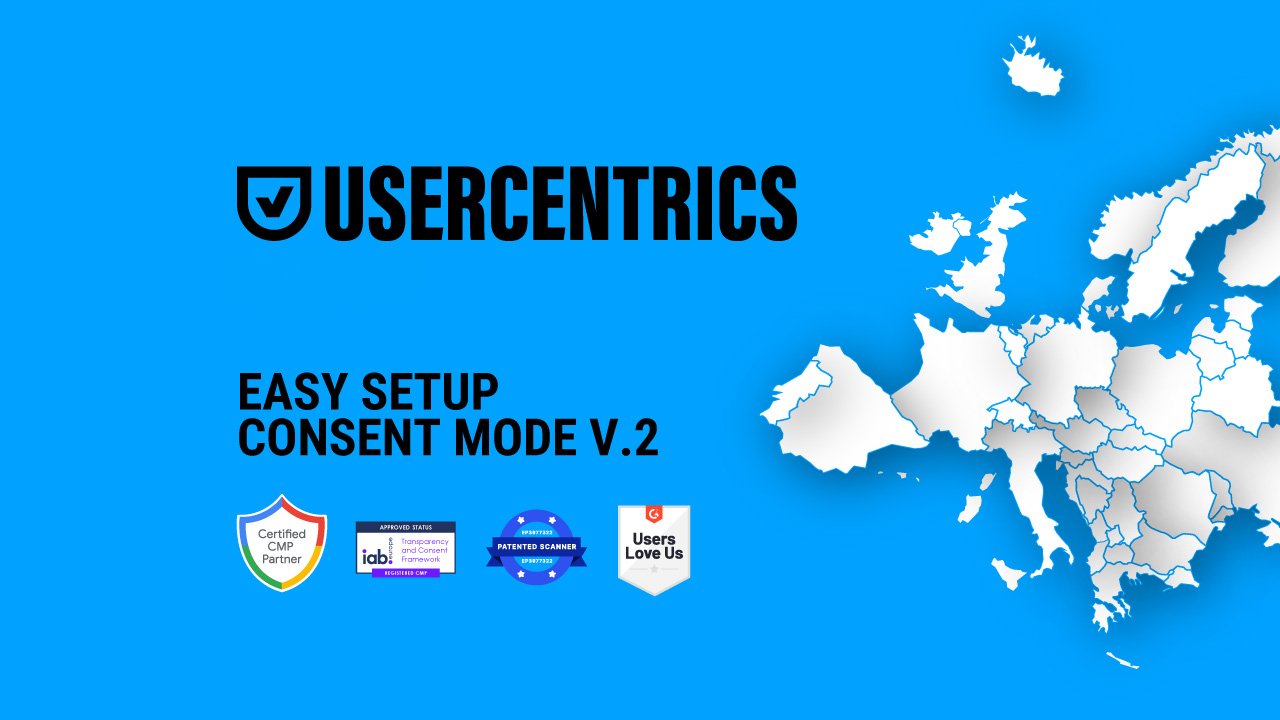GOOGLE-CERTIFIED CMP FOR CONSENT MODE V2
Usercentrics CMP and Google Consent Mode
If your business targets customers in the EU or EEA, you need to use a Google-certified consent management platform (CMP) to run privacy-compliant advertising and analytics. Usercentrics Consent Management Platform integrates seamlessly with Google Consent Mode v2 (GCM), so you can fulfill requirements with confidence.
Automatically send valid consent signals to Google Ads, Google Analytics 4 (GA4), gtag, and Tag Manager. Usercentrics CMP supports privacy-compliant data collection without sacrificing analytics or campaign performance. Protect revenue streams and grow user engagement and trust.
Common GCM questions and answersExplore our Google Consent Mode documentation

Set up Google Consent Mode in 3 easy steps
Simplify privacy compliance, maximize marketing performance
Discover our CMS integrations
Frequently asked questions
Google Consent Mode is a tool that enables websites to communicate users’ cookie consent choices to various Google tags that help measure website and advertising performance. The tool was initially used primarily for anonymized data tracking. However, its intent and use have evolved, and today it functions more as a signaling tool.
Google Consent Mode enables compliance with data privacy regulations requiring user consent, while also enabling companies to get the data they need for digital operations.
Google Consent Mode enables websites to communicate users’ cookie consent choices to various Google tags to ensure they’re activated only if consent has been received. Website owners can also use conversion modeling to gather insights from anonymized data collected from users who reject cookies.
For full implementation instructions, read our Consent Mode documentation.
The following Google services currently support Consent Mode:
- Google Analytics / Google Analytics 4
- Google Ads (Google Ads Conversion Tracking and Remarketing)
- Floodlight
- Conversion Linker
It’s a simple, convenient customization and another way we stay one step ahead of your ever-changing legal and technology needs.
Under the GDPR, consumers — like visitors to websites, ecommerce shoppers, app users, etc. — must provide explicit consent before their personal data can be collected from their online activities and processed for various purposes. Consumers must also be notified about the ways their data is collected, for what purposes, who may have access to it, and other details. A consent management platform enables websites, apps, and more to provide information about cookies and tracking services in use (Data Processing Services) and enables users to make granular consent choices about what service uses, like cookies, they consent to, or not. This helps meet GDPR requirements.
Giving users granular consent choices about data privacy and respecting them not only helps to meet data privacy regulation requirements, it also helps strengthen relationships with customers as it demonstrates respect for their privacy and personal information. This helps build engagement and brand loyalty long-term. These relationships also help users entrust companies with more data over time, especially as it benefits them, e.g. with personalized communications and offers. Audiences can be more accurately segmented and targeted, and audiences can be better engaged with information of greater interest to them. Consent-driven marketing helps grow long-term revenue while helping to ensure data privacy requirements are met.
Because Google will have to prove receipt of explicit consent under the DMA, they will need to ensure third-parties companies using their platforms, e.g. for advertising, also obtain explicit user consent for processing of personal data. Google Consent Mode, when used in tandem with a consent management platform, enables third parties to obtain user consent and signal it to Google to enable them to continue using their platforms for digital operations.
Google Consent Mode can be integrated with Google Tag Manager in two ways, depending on whether the website owner uses a consent management platform (CMP).
- With a CMP: By using the CMP’s Tag Manager template, which is integrated with the Consent API. This can be done from within Google Tag Manager itself, requires minimal coding and saves website owners’ time and effort.
- Without a CMP: By creating a custom Tag Manager template, which requires coding knowledge and the help of a developer to build, implement and update.
Once Google Consent Mode and Google Tag Manager are integrated, user consent choices are passed on to Google Tag Manager, which then manages how cookies behave for a user’s visit.

